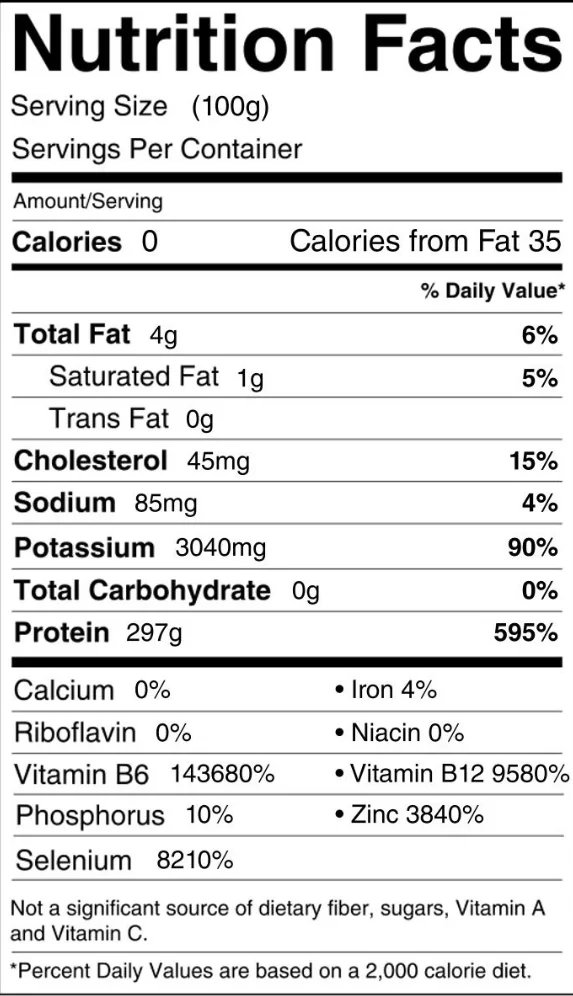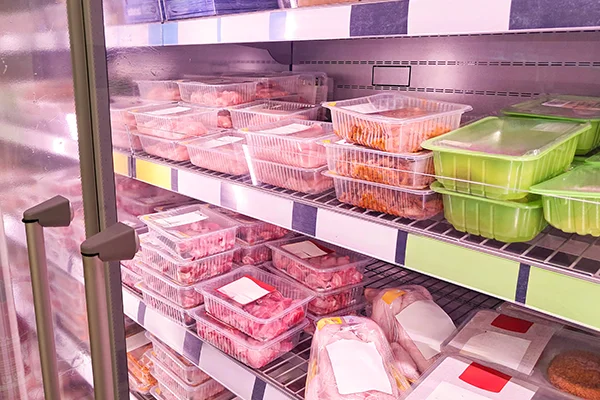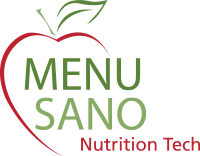Understanding what is required on an FSIS label is critical for food manufacturers seeking compliance in the U.S. market. The USDA mandates specific components on labels for meat, poultry, and certain egg products. These regulations ensure transparency, protect public health, and help consumers make informed decisions.
This article provides a comprehensive breakdown of FSIS labelling requirements, focusing on USDA FSIS mandatory labelling requirements, the FSIS compliance guidance for label approval, and the intricacies of FSIS generic label approval. Whether you’re a processor, distributor, or private label brand, this guide is essential for navigating the complexities of label compliance.
Key Takeaways
- Under USDA regulations, FSIS labelling is mandatory for meat, poultry, and certain egg products.
- Labels must include essential elements like product name, inspection legend, handling statement, and ingredient list.
- Nutrition facts and allergen declarations must follow FSIS guidelines unless exempt.
- Labels with extraordinary claims (e.g., “organic,” “low fat”) require FSIS review and approval.
- Generic label approval allows qualifying labels to be approved in-house without FSIS submission.
- Adhering to the latest FSIS compliance guidance for label approval ensures legal and accurate product labelling.
Understanding FSIS Labelling Requirements

The FSIS labelling requirements apply to products under federal inspection, including beef, pork, lamb, poultry, and certain egg products. The FSIS mandates several mandatory features and enforces label approval processes to ensure each label meets federal standards.
Mandatory FSIS Label Features
Per the latest FSIS compliance guidance for label approval, the following elements are required on an FSIS label:
- Product Name: A truthful, descriptive name that accurately reflects the product contents.
- Inspection Legend and Establishment Number: Indicates the product was inspected and passed by FSIS, with the establishment number identifying the plant.
- Handling Statement: If applicable (e.g., “Keep Refrigerated” or “Keep Frozen”), this ensures safe storage.
- Ingredients Statement: Lists ingredients in descending order by weight. This is critical for transparency and allergen identification.
- Net Quantity of Contents: The accurate weight or volume, declared in U.S. customary and metric units.
- Name and Address of Manufacturer, Packer, or Distributor: Must include the firm name and the city, state, and ZIP code.
- Nutrition Labelling: Required unless exempted, following FDA’s Nutrition Facts format, with FSIS-specific nuances.
- Safe Handling Instructions: Required for raw or not fully cooked products.
- Allergen Declaration: Must clearly state major food allergens per FALCPA.
These are USDA FSIS mandatory labelling requirements that every label must adhere to before entering commerce.
FSIS Compliance Guidance for Label Approval
The FSIS provides detailed compliance guidance for labelling, most recently updated in the FSIS-GD-2024-0001 document. This guidance helps establishments identify what must be pre-approved by the Labelling and Program Delivery Staff (LPDS) versus what qualifies for generic approval.
The FSIS compliance guidance for label approval outlines:
- Definitions of label categories (e.g., sketch label, final label)
- Approval pathways and when submission to FSIS is required
- Exemptions and special situations (e.g., temporary approvals)
- Specific claims requiring prior evaluation (e.g., nutrient content claims, organic, natural)
This guidance supports consistent interpretation of FSIS labelling requirements across establishments.
Generic Label Approval: What You Can Approve In-House
FSIS generic label approval allows companies to self-approve certain labels without submitting them to FSIS, provided they meet all regulatory standards.
To qualify for generic approval, the label must:
- Contain all mandatory features
- Exclude extraordinary claims (e.g., “low fat,” “organic”)
- Use standardized formats
- Not be misleading
Examples of eligible generic labels include:
- Simple meat or poultry products without added ingredients
- Labels with standard product names
- Products with previously approved formulations and layouts
While generic label approval streamlines operations, firms must still maintain accurate records and ensure labels are compliant with FSIS labelling requirements.
Labelling Requirements for Meat and Poultry Products

Meat and poultry labelling is a specialized area governed under 9 CFR Parts 317 and 381. FSIS closely monitors these products, and the labels must clearly communicate:
- Type of meat/poultry
- Form and condition (e.g., ground, whole, frozen)
- Content-specific claims (e.g., “no antibiotics ever”)
- Origin labelling, especially for imported products
Each label must conform to the FSIS compliance guidance for label approval and, if applicable, the generic label approval rules.
Additionally, poultry labels must reflect species-specific language—for example, chicken versus turkey—and products must be truthfully represented in marketing language.
Special Claims and FSIS Label Review Requirements
Some label features require FSIS prior approval even if the rest of the label qualifies for generic label approval. These include:
- Nutrient content claims (e.g., “high in protein”)
- Health claims (e.g., “may reduce the risk of heart disease”)
- Animal production claims (e.g., “grass-fed,” “free-range”)
- Religious certification claims (e.g., Halal, Kosher)
- Geographic claims (e.g., “Texas-style brisket”)
These elements must be backed by documentation and evaluated by FSIS’s Labelling and Program Delivery Staff.
Documentation and Record Keeping
Even for generic labels, businesses must maintain records showing:
- Product formulation
- Label proofs
- Justification for any special claims
- Packaging specifications
This documentation must be accessible for FSIS inspectors and audit personnel, ensuring compliance with FSIS labelling requirements at all times.
Common Pitfalls to Avoid in FSIS Labelling
Many labels are flagged for:
- Incorrect product names
- Misleading claims
- Missing mandatory features
- Allergen mislabeling
- Non-compliant formatting
Businesses should conduct internal label audits and consult the most recent FSIS compliance guidance for label approval to remain compliant.
How to Submit a Label for FSIS Approval
When a label requires FSIS review, submission must be done through the Label Submission and Approval System (LSAS):
- Create an LSAS account.
- Upload the label with all supporting documentation.
- Select appropriate approval type (e.g., sketch or temporary).
- Monitor status and respond to FSIS inquiries.
Though complex claims may extend timelines, FSIS typically reviews labels within 7–10 business days.
Staying FSIS-Compliant with Confidence
Achieving and maintaining compliance with FSIS labelling requirements is essential for any company producing meat, poultry, or egg products. Understanding what is required on an FSIS label, properly applying generic label approval, and following the FSIS compliance guidance for label approval are the cornerstones of a compliant labelling program.
Companies must prioritize accuracy, transparency, and regulatory awareness in every labelling decision. This protects both their brand and the consumers who trust their products.
MenuSano simplifies FSIS label creation with its nutrition analysis and food labelling software designed to generate USDA FSIS-compliant labels. The software streamlines the process by ensuring your labels include all required features, such as nutrition facts, allergen declarations, and standardized ingredient lists. With an intuitive interface and up-to-date regulatory templates, MenuSano enables food producers to stay ahead of FSIS labelling requirements—saving time, reducing errors, and keeping your operations inspection-ready.




















